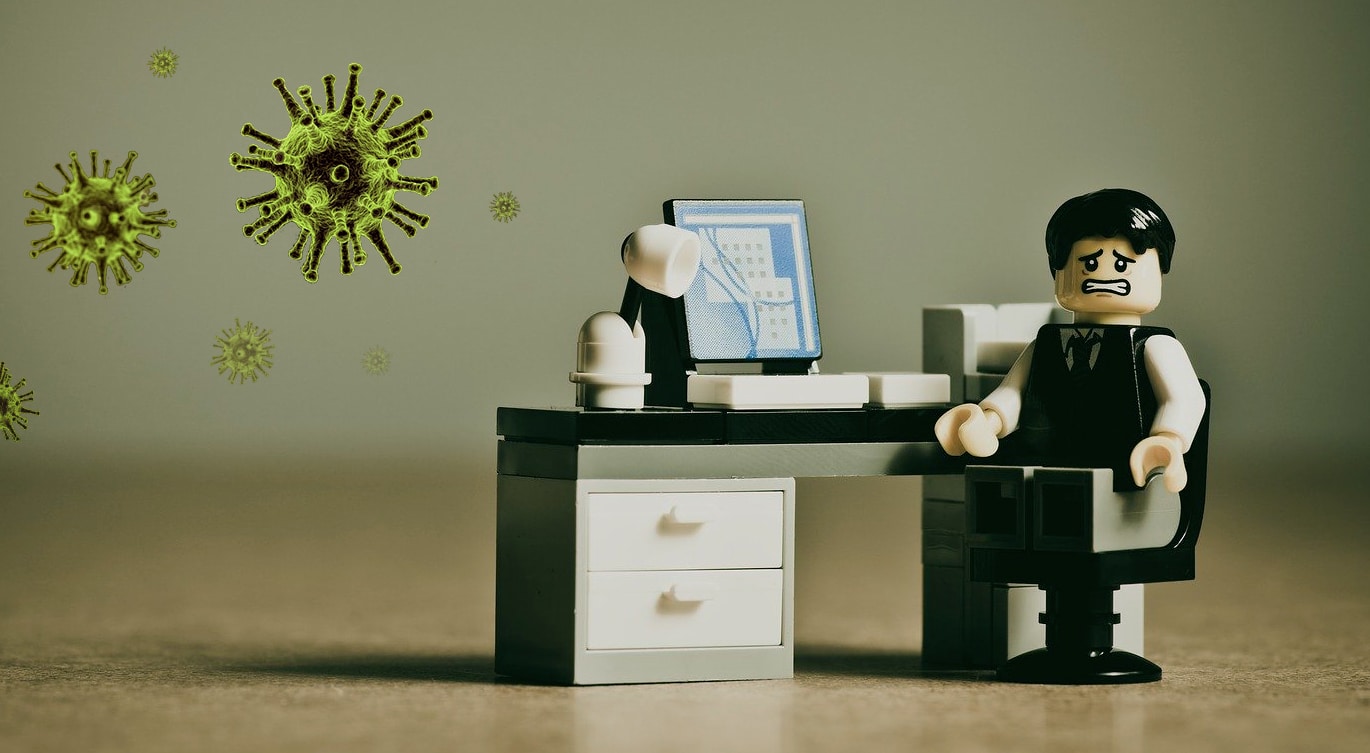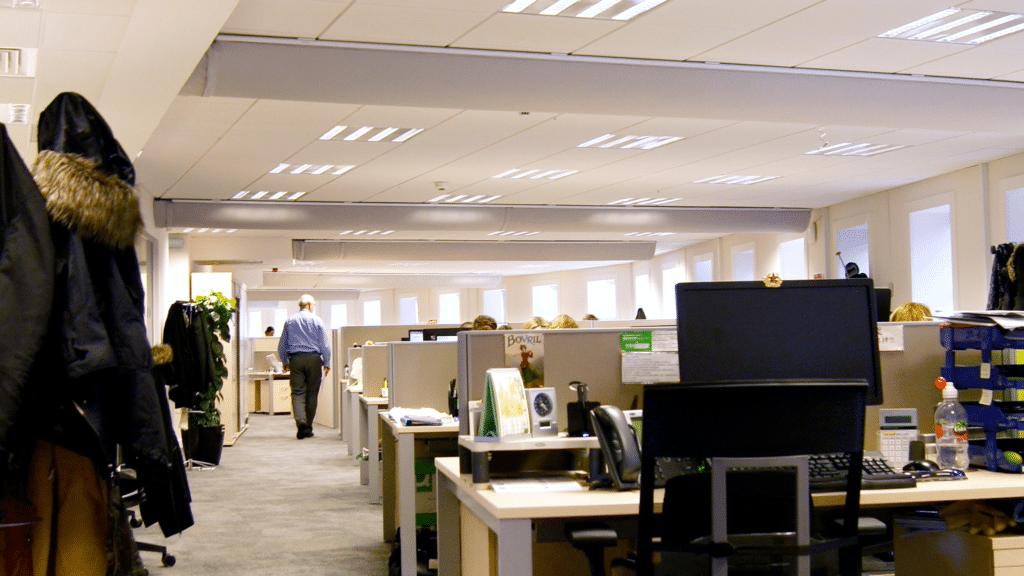Sick Building Syndrome: Can An Office Make You Sick?



What Is Sick Building Syndrome?
Sick building syndrome is the common name for the general illness and symptoms experienced by the occupants of a building. It is far more common in open-plan offices, but it can be a problem in any building, especially if it is crowded or poorly ventilated. Typical symptoms are:
- fatigue and difficulty concentrating
- headaches
- dry eyes, skin or throat
- blocked or runny nose
- coughs
- general upper respiratory symptoms.
While these are common symptoms across society, for the occupants of a ‘sick building’ the symptoms tend to get worse the longer they stay in the building, getting better after they leave. According to the Office of National Statistics, an estimated 141.4 million working days were lost in 2018 due to sickness or injury in the workplace. Almost a third of these were caused by minor illnesses such as colds and coughs.
The specific cause of sick building syndrome is not clear, but several factors appear to be involved. For example, the workers of a noisy, open-plan office with poor ventilation and dust-accumulating soft furnishings will almost certainly develop symptoms of sick building syndrome. Some factors are flickering lights, high noise levels, humidity and temperature fluctuations. But, without a doubt, the leading cause of sick building syndrome is poor indoor air quality.
What Causes Poor Indoor Air Quality?
Poor air quality is the result of many different issues combined with a lack of adequate ventilation. Today’s energy-efficient buildings are designed to be more airtight. That’s an effective way to minimise energy losses, but it also allows air pollutants to accumulate.
Carbon Dioxide
Imagine a small meeting room. As the occupants breathe, they exhale carbon dioxide into the air. In low ventilation conditions, the CO2 accumulates in the air, slowly displacing the oxygen originally present. We’ve all experienced stale air, but did you know it can impair your ability to think clearly? That is what William Fisk of UC Berkeley found in his study, published in 2012. When exposed to CO2 concentrations of over 1,000ppm in an office-like chamber, the participants of the study demonstrated reduced decision-making performance.
Chemical Pollutants
Volatile organic compounds (VOC) such as acetaldehyde, benzene, or formaldehyde are another source of indoor air contamination leading to poor air quality. They are often the result of off-gassing from building products and furnishings. That new carpet smell? An example of VOC emissions. So too is the smell of a freshly painted room. But VOCs are released by many materials over the years, leading to indoor concentrations up to ten times higher than outdoors. They are known to cause a plethora of health problems, making mitigating action through proper ventilation essential to indoor air quality.
Microbial Contamination
Microbial contamination also reduces air quality. If you’ve ever noticed a musty smell in a locker room, you have experienced microbial air contamination. Excessive humidity, perhaps from too few air changes in the room, can allow the growth of bacteria and fungi, whose metabolic processes release volatile compounds which are detrimental to upper respiratory health.
Other common contaminants are airborne fibres from frayed furnishing materials, dust from insufficient maintenance of HVAC systems, and dirt from improper or infrequent cleaning.
How to Prevent Sick Building Syndrome
The Health and Safety Executive says: “In many cases it will be very difficult, if not impossible, to change things when building and installation work have been completed. In some cases alterations may be possible but would be prohibitively expensive to carry out.”
However, building managers have several effective measures at their disposal to lessen the effects of sick building syndrome and improve office workers’ wellbeing. These are some ideas:
- Choose materials that don’t off-gas noxious chemicals and VOCs. For example, textiles with OEKO-TEX® certification, which have been tested for harmful substances to guarantee their safety.
- Ensure adequate and plentiful ventilation to prevent the accumulation of airborne contaminants. Choose well-designed, draught-free ventilation options such as fabric ducts or Prihoda SquAireTex tiles. Spot solutions like cassette air conditioning can create poor air distribution, leading to draughty rooms and temperature fluctuations.
- Make sure all HVAC equipment, including ducts and vents, are maintained appropriately and cleaned regularly.
We Can Help
Prihoda fabric ducts can help you mitigate the causes of sick building syndrome. They can be used to achieve ideal ventilation conditions and are almost maintenance-free. Keeping our fabric ducts clean is effortless – simply slide off the rails, wash in a washing machine, and hang them back up. And as they have Standard 100 by OEKO-TEX® certification, they are guaranteed to be free from the harmful chemicals that cause sick building syndrome. On top of that, Prihoda fabric ducts are made of endless fibre textile material suitable for cleanrooms to ISO 4 standard, which means that they don’t shed fibres into the air.
We can take care of the entire process, from design to cleaning and maintenance, delivering fresh, low-velocity ventilation to support the wellbeing of all building occupants.
Contact us for a free quote.
Looking for more information?
Our experts are on hand to answer any questions. Why not give us a call or drop us a message, We’ll work with you to find the right solution.
Contact us


